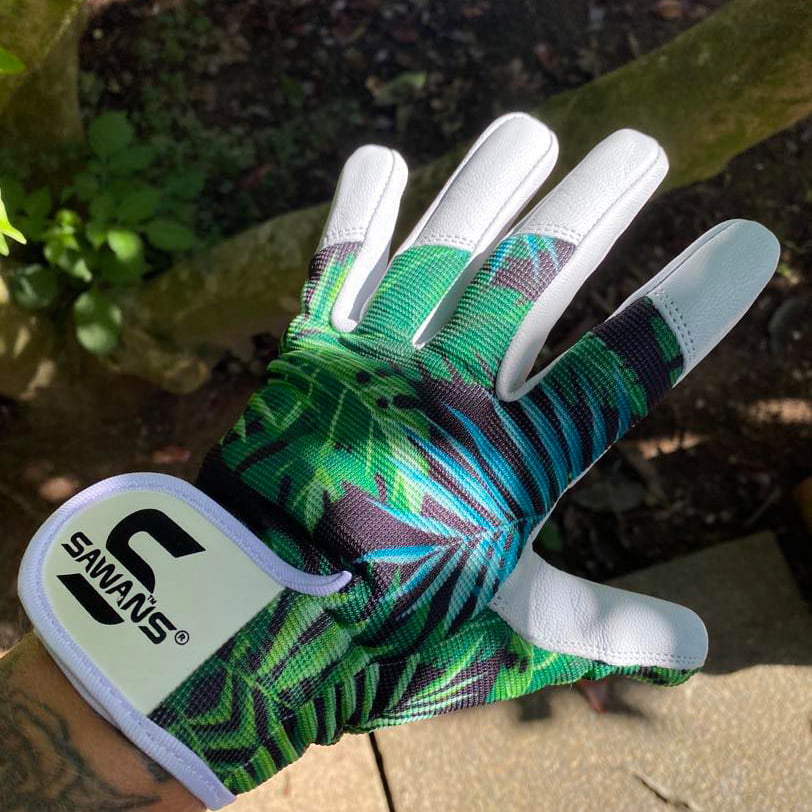There is lots of talk around whether you cut wet grass and the simple answer is yes – However, there are some do’s and don’ts when it comes to cutting grass when wet. We will go through them in this article, by the end you will know if you should or should not cut your wet grass.
Why do people say you should not cut wet grass?
There are people who say you should not cut wet grass which is correct for well maintained lawns like bowling greens. Walking on a very wet lawn could leave footprints and damage root systems, cutting it could pull up chunks from the lawn.
If you use a lawn mower on wet grass it can also cause dead patches. This happens because the grass cuttings do not collect in the waste bags when wet. Instead it drops out in clumps on your lawn, if left this will cause dead patches in the grass.
Should you cut wet grass?
Wet grass can be daunting but have no fear. If you are not after a bowling green perfect lawn right away then you can get started no matter the condition of the grass. The first question is ‘should you cut wet grass?’ and this is how to work that out.
1: Does your grass need cutting now or can it wait for dry weather?
If your lawn is just looking a little bit scruffy then the chances are you can wait for dryer weather, long grass becomes a problem when it is tall enough to flop over or it is going to seed.
2: The grass is very long and needs sorting now!
If the grass is very long then the chances are it is tilting over which will cause dead patches underneath. These patches will get worse in wet countries like the UK, especially during the Winter months.
If this is the case and you need to cut your grass asap, there is a technique you can use to get the grass down to a more attractive and manageable level.

How to cut long and/or wet grass
What you will need
How to cut long, wet grass
- Start by strimming the grass with your strimmer, for very tall grass you may need to start at the top and work your way down. It can be difficult cutting tall grass from the bottom as it will put the trimmer under more strain.
- Get the grass to half the original length first, raking it up every meter squared. This makes everything easier to manage. If you leave the wet dead grass, it will rot as well as the grass beneath it.
- Once you have cut the lawn to around half its original height, remove the piles of dead grass to the compost bin.
- You can now go back over the lawn, strimming it to the desired length. When done you can leave mowing it until better weather or if the lawn is not too damp and muddy, you can mow the grass at the lawn mower’s highest setting.
Do not attempt to work on lawns that are water logged as you will likely damage the grass. If it is waterlogged you will have to wait until the excess rain has run off.

How do I know if the lawn is waterlogged?
How do you know if a lawn is too wet to work with? If you stand on the lawn and your shoe sinks into the mud or water then it is too wet. Walking on a lawn like this will damage the grass and its roots. It will also be near impossible to strim as the mud will hold any grass down once stood on.
Can you cut wet grass with a strimmer?
Yes, you can cut wet grass with a strimmer. It is the best tool you can use as it does not pull up the grass when cutting through it like a lawn mower would. To learn how, please refer to our guide above.
Can you cut wet grass with a petrol mower?
You can cut wet grass with a petrol lawn mower but it is not advised. This is because wet soil does not grip roots as tightly as it does when dry. A lawn mower is likely to pull up grass in tufts rather than cut it leading to a damaged lawn.
Is it safe to cut wet grass with an electric mower?
Whilst it is safe to cut wet grass with an electric mower, it is not advised you do so. Mowing a lawn after large amounts of rain will likely damage the grass by pulling it up instead of cutting the blades.
Related articles: Eco money saving tips, What is foodscaping?, Foodscaping ideas









